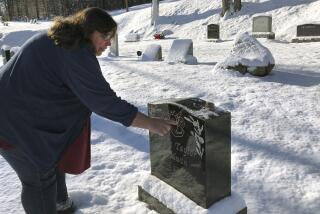Cancer death rates decline in the U.S.
- Share via
Cancer death rates are still declining in the U.S., but some are declining faster than others -- and cancer remains the leading cause of death for Americans younger than 85. In short, we’ve made progress against the disease, but more work needs to be done.
In an annual report released Friday, the American Cancer Society estimated that 1,596,670 new cancer diagnoses and more than 570,000 cancer deaths are expected to occur this year. It also announced that death rates fell by about 22% for men and 14% for women between 1990 and 2007. Since the early 2000’s, the decline has been 1.9% a year in men and 1.5% each year in women.
The rates and estimates were revealed in Cancer Statistics, 2011 and Cancer Facts & Figures 2011.
For men, declines in death rates of lung,prostate and colorectal cancers are driving the overall trend. For women, lower rates of death from breast and colorectal cancer are driving numbers down. The last few decades have seen better early detection—and better treatment—of most of those cancers, the authors say. With lung cancer, it was men’s reduced tobacco use over the past half-century that helped turned the tide.
Lung cancer solidly remains the top killer for men and women, but deaths from lung cancer in women have also finally started to decline, a historical reflection of women picking up, then kicking, smoking habits later than men.
Prostate cancer in men, and breast cancer in women, are still the second-deadliest cancers, followed by colon and rectum cancers. With lung cancer, these three cancer types make up about half of all cancer deaths.
As for the work that remains, the American Cancer Society points out the many disparities in cancer rates and deaths.
“The elimination of educational and racial disparities could potentially have avoided about 37% (60,370) of the premature cancer deaths among individuals aged 25 to 64 years in 2007 alone. Further progress can be accelerated by applying existing cancer control knowledge across all segments of the population with an emphasis on those groups in the lowest socioeconomic bracket.”
RELATED: More news from HealthKey






